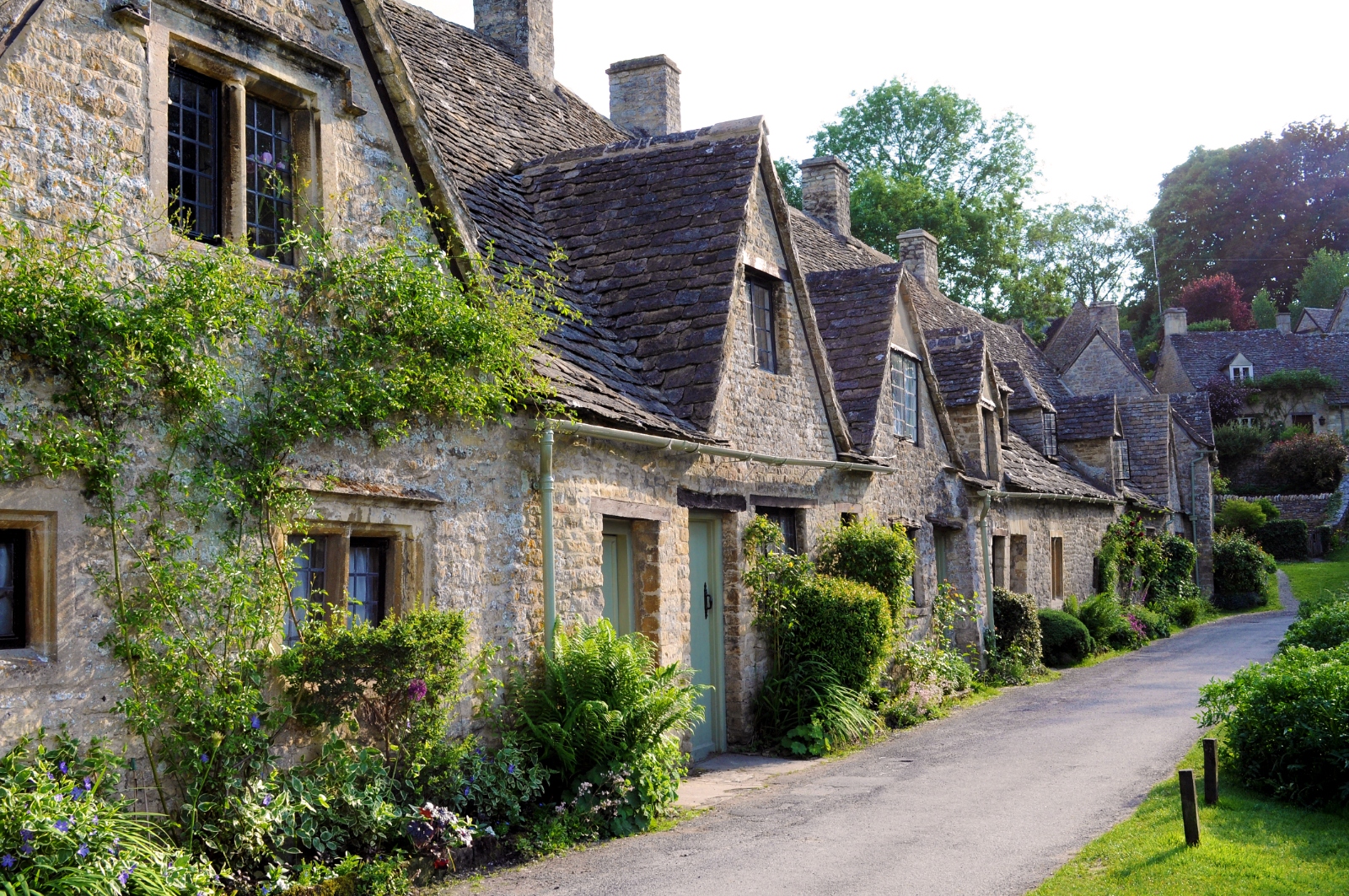Where is the prettiest place in the Cotswolds? We look at the most attractive places to visit while enjoying your stay in the Cotswolds.
Best Places In The Cotswolds to Visit
The Cotswolds are one of the most beautiful places and popular tourist destinations in the UK, both for those who live here and visitors from abroad. From the quaint villages to green rolling hills to the wealth of historic buildings and places to visit, The Cotswolds has something to offer everyone.
This is possibly the best thing about the Area of Outstanding Natural Beauty (AONB). Every winding country lane has a thriving market town or some of the prettiest villages you've ever seen at the end of them. Many visitors find themselves drawn back all the sooner to discover yet more picturesque hamlets and villages hidden away.
Any trip to the UK should include a trip to see the beauty of The Cotswolds. And if you already live here, there's no excuse (besides travel difficulties) not to visit these stunning locations. But with so much to choose from, it can be tricky to know where to aim for.
This is why we've compiled a list of the best destinations in The Cotswolds. Everything from large villages and small towns to some of the most glorious examples of the British countryside. So, if you want to head to The Cotswolds and are unsure where to head first, read on to discover our favourite places to visit.
Prettiest villages in the Cotswolds
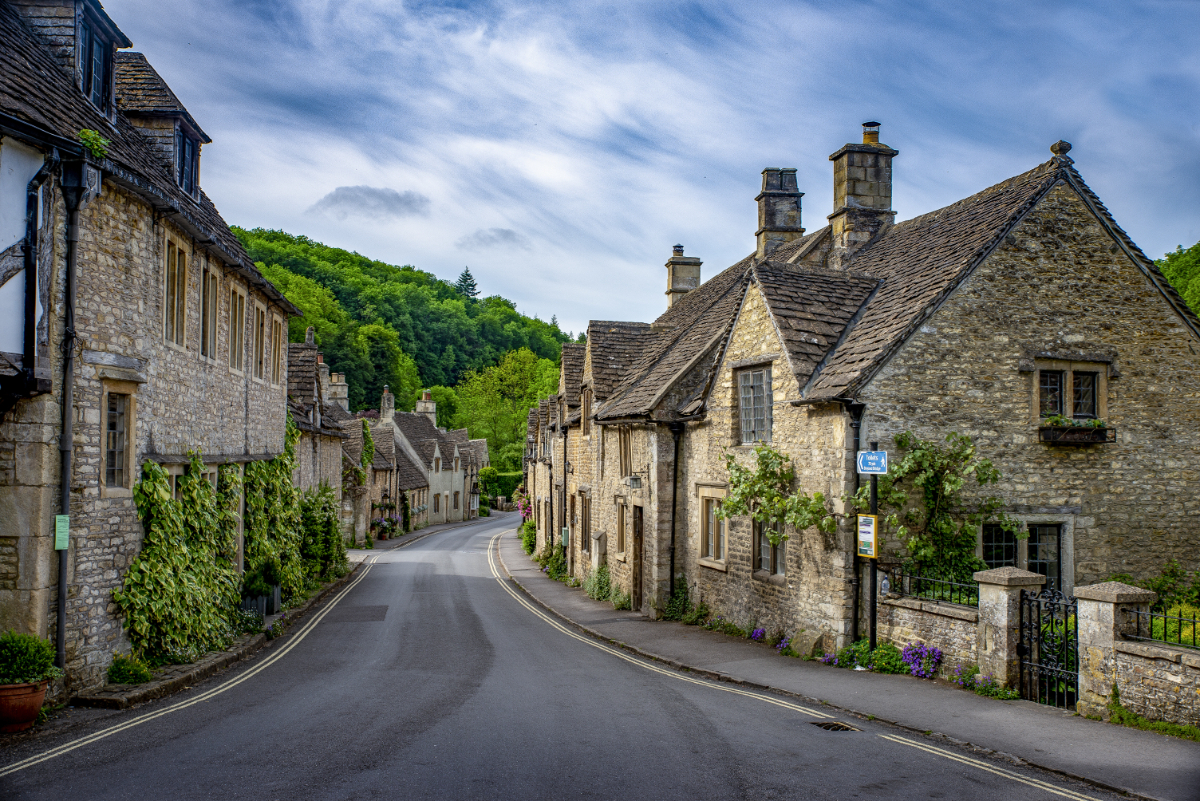
Even if you've never been before, if you close your eyes and picture a quintessential scene of a British countryside village, you'll likely come up with something incredibly close to The Cotswolds.
The Area of Outstanding Natural Beauty covers over 800 square miles, including locations in Gloucestershire, Oxfordshire, Warwickshire, Wiltshire and Worcestershire.
With so much space under its umbrella, it's not surprising that The Cotswold contains so many beautiful hamlets in its many river valleys, with gorgeous historic buildings in ancient towns that exude typical country charm. The elegance and beauty of these locations are sure to impress any visitor.
Here is our list of the must-see locations in The Cotswolds for visitors to consider. We've included some of the most popular destinations in the region, which some people won't be as familiar with, to provide a wide range of choices.
Stratford-Upon-Avon
Where better to start our list of Cotswold destinations than the birthplace of The Bard? Stratford-Upon-Avon is the destination lovers of Shakespeare's plays and sonnets can revel in the atmosphere of the world's greatest playwright, with numerous other sights to see and award-winning museums to visit.
For the full Shakespeare experience, we recommend heading to the Tudor World museum and New Place, the recreation of the home he lived in with his family. Next door, in Nash's House, you can find numerous artefacts from Shakespeare's life. You can also visit the schoolroom where the young playwright first put quill to paper.
The open-bus tour is the best alternative if you're looking for a quicker trip around the medieval market town. And the Shakespeare attractions don't end there. You can visit Anne Hathaway's Cottage, the beautifully romantic home of the poet and wife of Shakespeare.
Mary Arden's Farm is the final Shakespeare destination and was the home of Shakespeare's grandparents and his mother, Mary Arden. There is plenty for families to do here, from falconry exhibitions to short walks and trails and entertainers providing fun for all the family, 16th-century style.
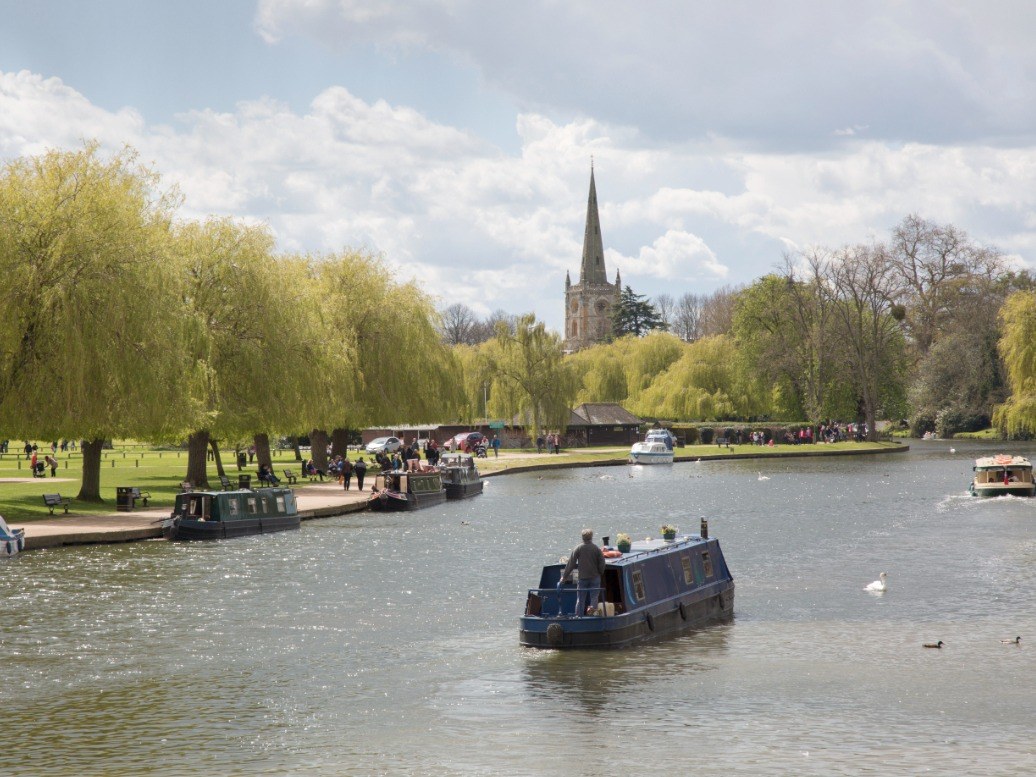
The Slaughters
If you had to pick one example of the idyllic beauty of The Cotswolds' many villages, the Upper and Lower Slaughters are just that. Connected by a bubbling stream from the River Eye, The Slaughters are one of the best examples of the traditional limestone cottages you'll find scattered throughout the region.
The name may sound a little off-putting, but there's nothing grizzly about its origin. While it may remind you of some ancient bloody battle, it comes from the Old English for "a muddy place" or a "slough", describing the environment in which the village was originally built.
The Old Mill in Lower Slaughter is a must-see, especially for history buffs, since there has been a mill on the same site since the 1086 Domesday Book was compiled by William the Conqueror. Today, the Old Mill is home to a museum, tearooms, a renowned ice cream parlour and a craft shop.
To reach Upper Slaughter from the Mill, head upstream along the Eye, looking out for the gorgeous Elizabethan manor house you'll pass on the way there. With 8 acres of cultivated gardens and beautiful grounds, this is the Lords of the Manor Hotel. A former rectory in the 17th century, you might consider staying there if you want more palatial living arrangements during your visit in The Cotswolds.
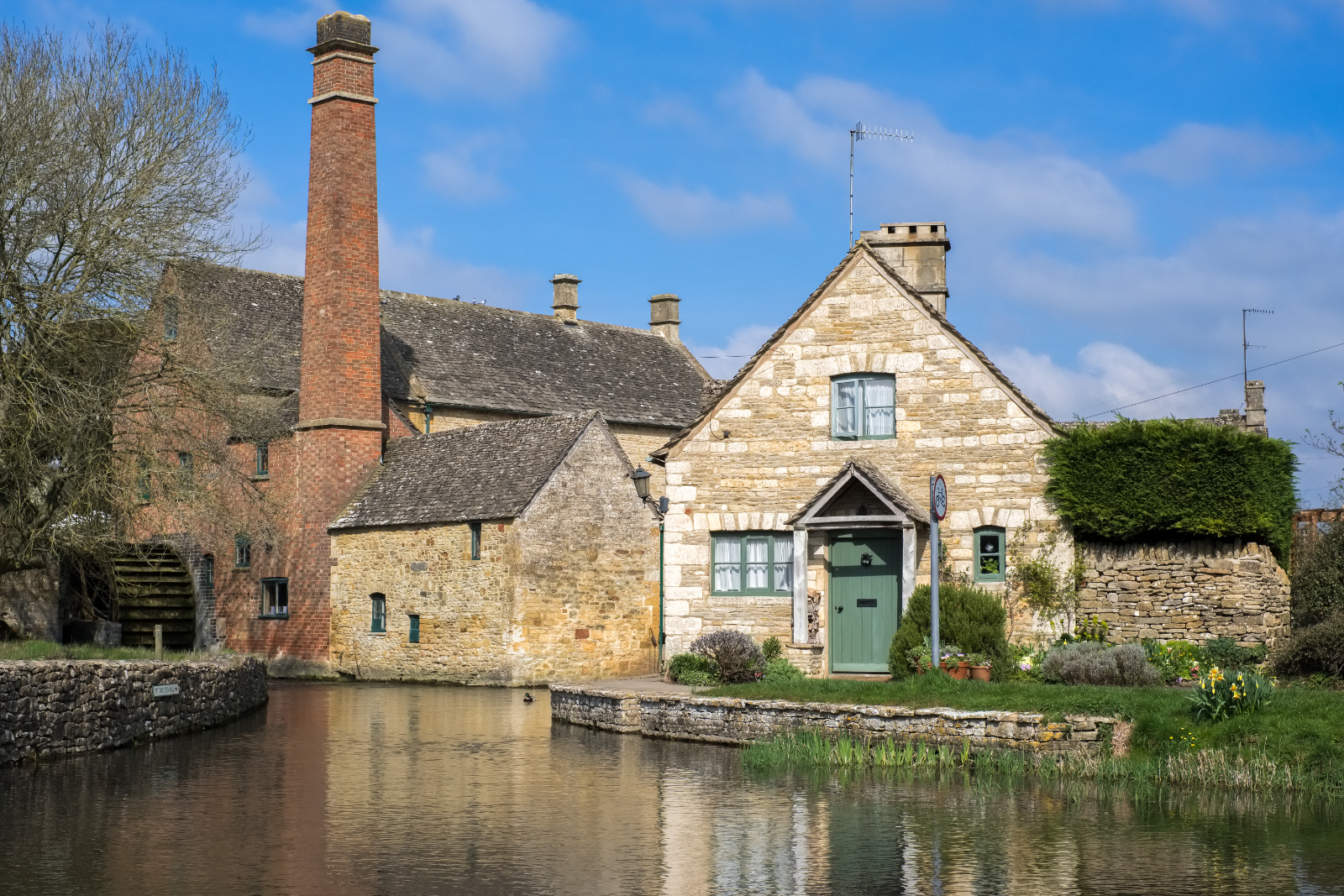
Stow-on-the-Wold
Stow-on-the-Wold is not only the highest geographical town in The Cotswolds but also one of the oldest market towns in the region. There has been trading in the area ever since Roman times, making it an ideal location for visitors looking to do a bit of shopping.
The huge market square in the beautiful Cotswold town was originally built to accommodate the vast amount of sheep trading that took place for centuries between 1107 and the 1980s. Aside from historic sheep pens, Stow-on-the-Wold offers a fantastic selection of delis, galleries, antique shops and boutiques to peruse, along with St Edward's Church.
Every second Thursday of the month, you can also find a vibrant farmers market taking place in Stow. It's also a short journey to neighbouring Cotswold Falconry Centre and Batsford Arboretum, where you can find activities for children and adults, such as woodland trails and bird of prey experiences.
Stanton
Yet another of the prettiest villages in England, which is something of a theme in The Cotswolds, Stanton is a gathering of quaint, thatched cottages set on the slopes of Shenbarrow Hill. You can find the parish in the Tewkesbury Borough of Gloucestershire, nestled in some of the most beautiful scenery you can find in England.
It's almost impossible to pass through without popping into the 17th-century ale house, the Mount Inn, for a pint brewed in the local area. The pub offers fantastic views of the Malvern Hills towards Worcester and the Welsh mountains to the west. For artists and artisans, the tutored courses in pottery, woodturning, watercolour painting and stained glass making at the Stanton Guildhouse are worth considering.
If you fancy another walking trail, you can head from Stanton to nearby Snowshill Manor and Garden, a picturesque setting that is like stepping through a time machine into the past. The charming National Trust property was designed by Charles Wade, an eccentric figure influenced by the Arts and Crafts movement of the late 19th and early 20th centuries.
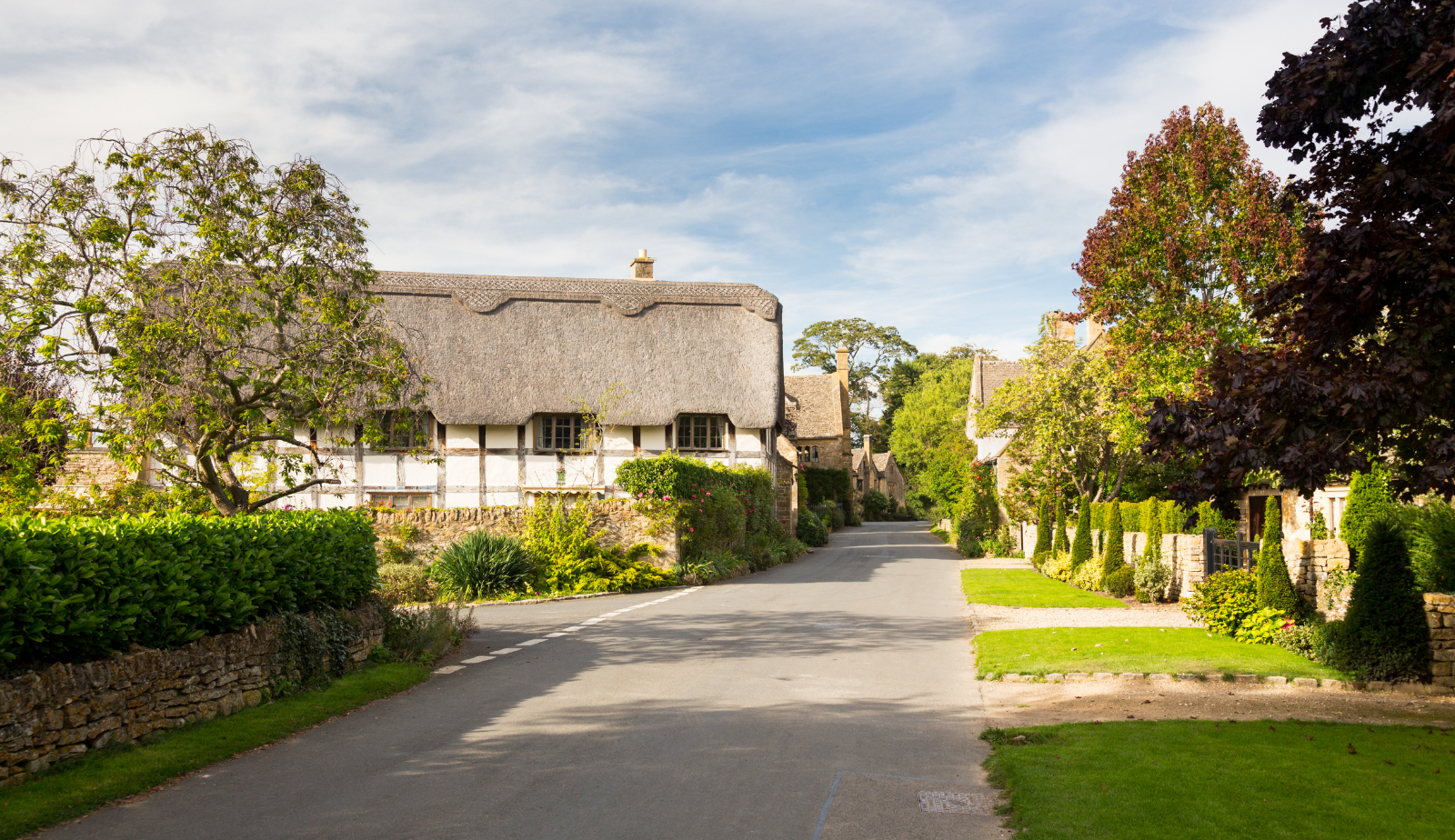
Cirencester
If you have fond memories of the 1st century AD, you'll remember when Cirencester was the second largest city in Roman England, after London. Nowadays, Cirencester is a thriving market town, with locals constantly unearthing archaeological finds in their gardens. The Corinium Museum displays artefacts from the previous 12,000 years of the area, while the Roman amphitheatre is a must-see for history lovers.
You could do a lot worse for charming local walks than Cirencester Park. Locals know it as "The Mansion", given that the woodland and pasture park is set in a 3,000-acre estate. You can walk here in complete privacy, given that the park is screened from the remainder of the attractive town by the world's tallest yew hedge.
Cirencester can also boast of being one of the greatest craftwork locations in the south. The New Brewery Arts centre offers some of the finest craft creations in the country, complete with a contemporary gallery and numerous studio shops for you to peruse. They also have a fantastic coffee house to relax in while you decide which pieces would look best on your mantelpiece.
Chipping Campden
The Campden Trust have done a fantastic job of preserving the ancient ambience of the Cotswold Town of Chipping Campden since it formed in 1929. Situated at the start of the Cotswold Way Trail (a national trail, no less), you won't find any overhead telephone wires or intrusive shop fronts here. This is a truly wonderful place filled with narrow streets amongst the Cotswold hills.
Given the age and preservation efforts of the town, you'll find a wide variety of architectural styles in Chipping Campden. For example, the National Trust Market Hall, built in 1627, resembles an Italian Renaissance Pallazzo, albeit with quintessential Cotswold gables. Additionally, Campden Manor (known as Old Campden House to the locals) has a distinctly Jacobean gatehouse, similar in looks to Asthall Manor in Oxfordshire.
The town has a particularly close relationship with boutique and craft shops. The Guild and School of Handicrafts were established in London in 1888 but moved to Chipping Campden in 1902. This means there is a wealth of boutiques and craft shops to visit. Robert Welch's shop on Lower Street is one of the best places to view these Guild crafts.
You can also visit the Court Barn Museum of Craft and Design to discover all about the Guild and the amazing pottery, jewellery and textiles they created through the years. With the quaint market town as a backdrop, few shopping experiences can beat this one. The Badger's Hall Tea Rooms proves a lovely spot to take in the sights of the pretty village and its cute shops.

Castle Combe
While some of the previous entries have been called the prettiest village in the Cotswolds, Castel Combe is honoured to be called the prettiest village in England. And once you've visited and walked its ancient winding streets, you'll be hard-pressed to disagree. The village's history begins with the Norman castle nearby, for which the place was named.
No new houses have been built in the village since the 1600s, giving Castle Combe a true fairytale feel. The typical limestone cottages of the Cotswolds are truly charming in this beautiful village, alongside the 13th-century clock and photogenic small bridge over the babbling brook that snakes through the place. It almost puts you in mind of a fantasy novel.
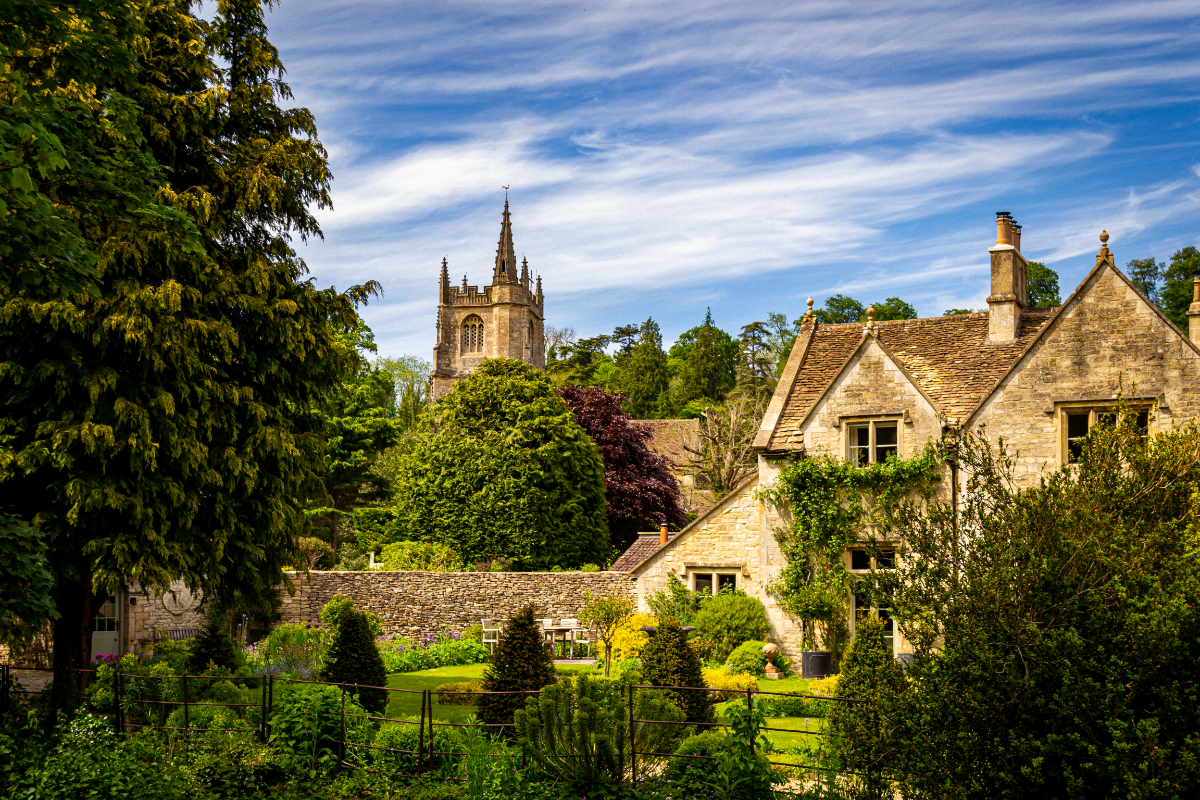
Speaking of which, given the inimitable charm of Castel Combe, it has been featured in numerous television productions and feature films. From new hits like 'Bridgerton' and 'The Wolf Man' to major films like 'Stardust', 'War Horse' and the original 'Dr Doolittle'.
While it may only look like a small village (and it is), there are still things to do besides gazing in wonder at how stunning everything is. Once you've taken your obligatory pictures on the bridge, head up The Street (there's only one) to the Market Place.
From there, you can head out on the woodland trail that circles the village, a perfect option for bird watchers given the woodpeckers, owls and buzzards that make this idyllic part of the English countryside their home. There's also Castle Combe Circuit for motoring fans who want something a little louder.
And what's a walk in the countryside without a pub or two at the end of it? No English village would be complete without an alehouse, and in Castle Combe, you can choose between The White Hart and The Castle Inn. Both establishments serve fantastic food and even have rooms for overnight stays.
Burford
The "Gateway to the Cotswolds" on the Oxfordshire side, Burford, has another unbelievably beautiful high street filled with 17th and 18th-century cottages and properties. Following the high street through the town, you'll eventually come to the packhorse bridge that spans the River Windrush.
On your way down, look out for the Tolsey Museum, housed in a 16th-century building. You might also want to keep an eye out for Reavley's, the oldest pharmacy in England. Established in 1734, Reavley's continues to offer traditional, time-tested remedies for all ailments today.
If you venture down to the river, you cannot help but notice Burford's magnificent church. Despite its cathedral-like spire, it is a church, and one with an interesting recent history. In the 19th century, it received a sub-standard restoration, which caused the famous Arts and Crafts movement founder and all-around genius William Morris, to found the Society for the Protection of Ancient Buildings.
Bourton-on-the-Water
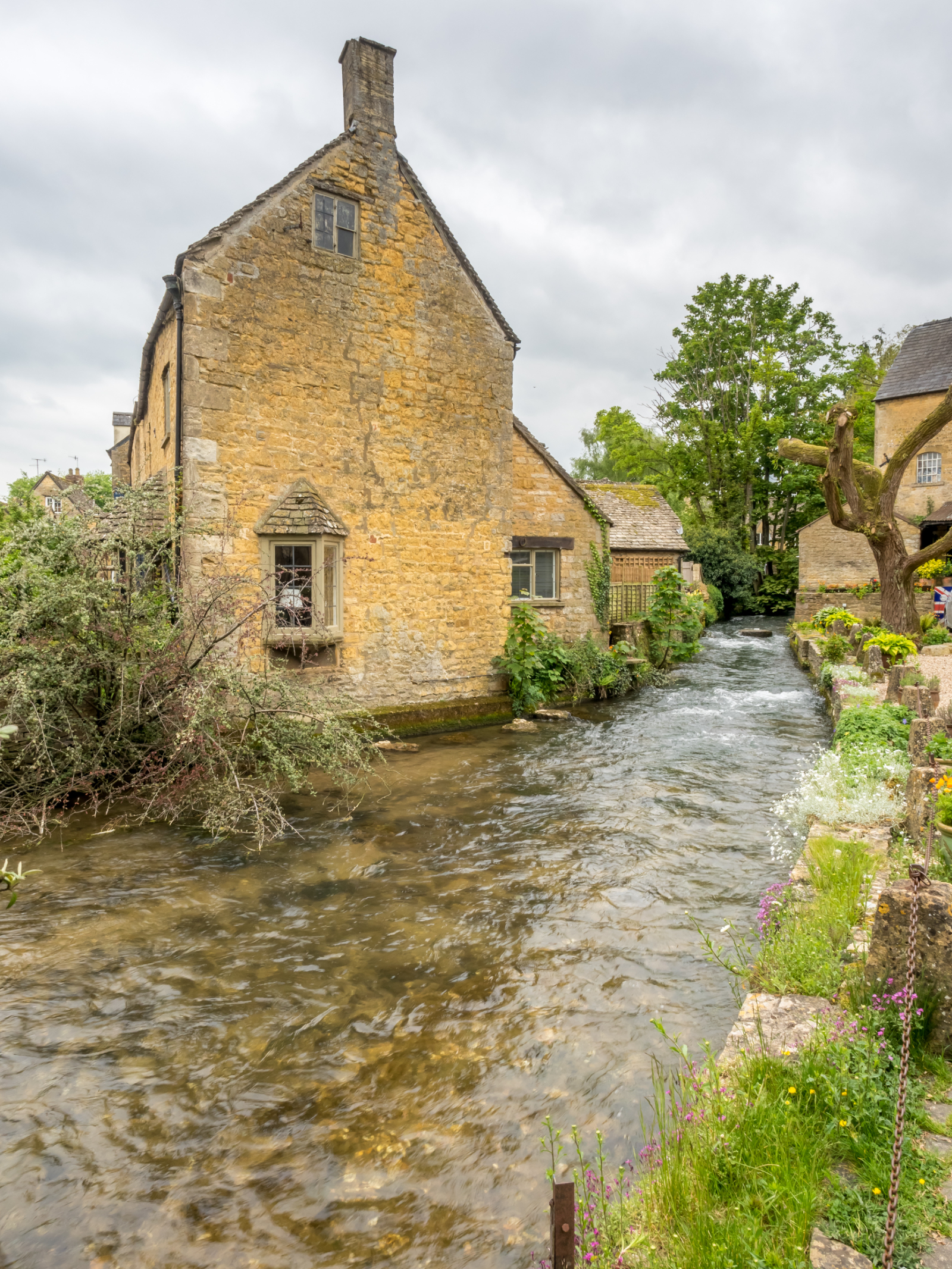
Further along the River Windrush, near the River Coln, you'll find Bourton-on-the-Water. With its elegant bridges built during the 18th century, this village is known as the "Venice of the Cotswolds". Along with other entries on our list, Bourton is one of the prettiest Cotswolds villages and arguably one of the prettiest in England.
And there's lots to do besides taking in the beautiful views. There's fun for all the family at the Old New Inn and its Model Village, which depicts the village as it looked back in the 1930s. The Birdland reserve is also a delight for children, with over 500 bird species to spot, including flamingos, ibis, pelicans and England's only breeding colony of King Penguins.
There's also the "Pandemonium of Parrots", a Jurassic Journey through nearby woodland, complete with life-size models of fascinating dinosaurs. If you happen to visit on a more rainy day, the indoor Discovery Zone is the perfect solution. Families can easily spend a day exploring everything Bourton-on-the-Water has to offer.
Blockley
Like other villages in The Cotswolds, Blockley's history is in sheep. The village is built on terraces above the gorgeous Knee Brook valley, complete with fields of grazing sheep. The original idea was that the sheep were brought into the village for sheering, where the wool would be sent to the mills at the bottom of the valley for weaving.
Over time, these mills switched to producing silk fabric, the legacy of which can be seen while exploring the village. Following the myriad maze of paths that snake through Blockley, you'll eventually discover the Old Silk Mill and Ribbon Mill buildings.
Fans of BBC daytime TV will recognise many of the sights in the village, given the series Father Brown uses Blockley as its primary filming location. This is probably due to the gorgeous English country gardens, with the Mill Dene Garden being a particularly good choice for horticulturalists of all ages.
Tetbury
Tetbury is yet another example of the many beautiful towns and villages in The Cotswolds. You can't drive anywhere in the region without stumbling on an elegantly historic town full of gorgeous buildings, and we're not the only ones who think this either. Tetbury is also home to King Charles III (when he's not in a royal palace, that is).
It is also the second largest town in The Cotswolds, having been built on the site of an ancient hill fort, which was later an Anglo-Saxon monastery. There are numerous boutiques, including the King's own luxury brand of Highgrove, alongside a police museum for you to visit. The Chipping Steps are also worth seeing for the beautiful cottages that border the steps if nothing else.
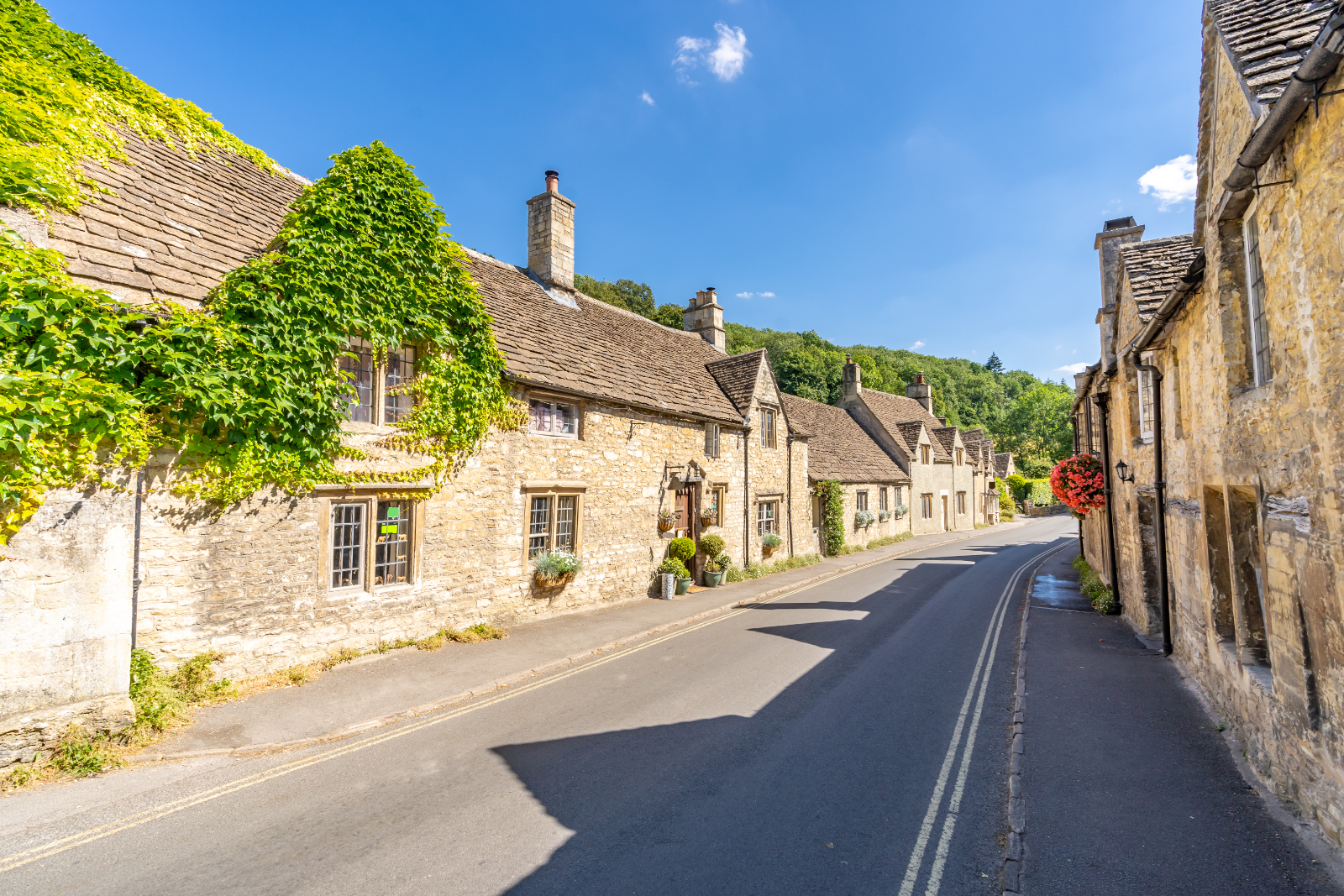
Broadway
As the name suggests, Broadway is known for its wide central High Street filled with fantastic restaurants, charming antique shops and specialist boutiques for visitors to explore. This is definitely the destination for you if you're looking to do a little retail therapy during your visit to The Cotswolds.
You may find Broadway slightly busier than other Cotswold towns, but that's thanks to the shopping opportunities. Don't be put off by the notion that you won't have the place to yourself; there are plenty of Cotswold villages and towns nearby to disappear to once you've filled your shopping bags.
Alternatively, for those looking for a Cotswold getaway that has a little more hubbub about it, then Broadway is the one for you. As a popular town, there is a wealth of fantastic eateries to choose from, including the Broadway Deli or the Crown and Trumpet. The Broadway Tower also offers awe-inspiring views of the surrounding Cotswold scenery.
Wotton under Edge
Wotton under Edge is one place that many Cotswold visitors find easy to miss off their itinerary. It's off the beaten track but provides plenty of surprises for those who manage to find it. Complete with quaint little shops, pink-washed cottages and hidden almshouses, there are more than enough surprises for adventurers to find.
There's also a heritage centre in the town with a free museum for families to entertain their children. The Ancient Ram Inn, a 13th-century alehouse, is another gem, popular amongst paranormal investigators and ghost hunters alike. If apparitions aren't your cup of tea, heading to the top of nearby Wotton Hill will give you some fantastic views of the surrounding countryside.
Chipping Norton
Chipping Norton is another great destination in The Cotswolds for those wanting a little more company. The busy market town provides the same picture-perfect aesthetics and historic buildings alongside ancient pubs, boutiques, antique shops and restaurants.
The town also boasts a few connections to the celebrity world, something the otherwise hidden-away nature of the Cotswolds does without. Wentworth Miller from the award-winning series Prison Break was born in the town. While Top Gear contributor turned farmer, Jeremy Clarkson also has his home near the town.
Alongside local celebrities, Chipping Norton also has a place in the history of popular music. If you had visited New Street between 1971 and 1999, you would have found the Chipping Norton Recording Studios, which has had numerous hits produced in it. Groups such as Status Quo, XTC, Duran Duran, Beverly Craven and Radiohead recorded there while it was still in use.
Bibury
Bibury, along with its lookalike Castle Combe, is one of the greatest examples, and therefore most photographed, of a typical Cotswold village. You've definitely seen this village before, in particular the houses on Arlington Row. They are synonymous with The Cotswolds and are prime examples of the style of cottages you see throughout the region.
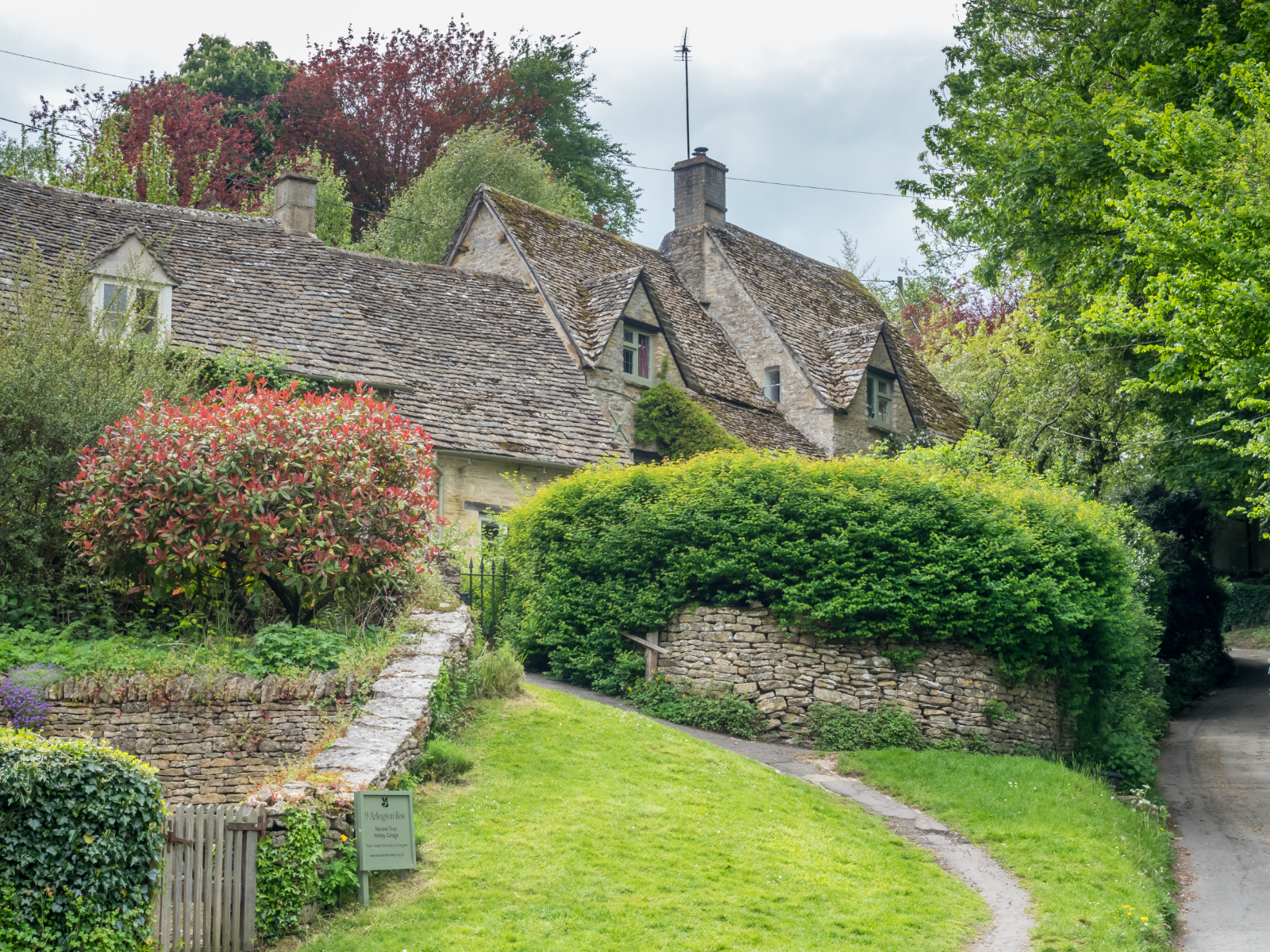
It's little wonder, then, that Bibury has attracted some serious names in the past. For starters, Japanese Emperor Hirohito stayed in the village while on his Grand Tour of Europe as a young prince, with the village becoming one of his favourite places in the world. Ultra-capitalist Henry Ford even tried to purchase a row of the iconic, beautiful houses from one of his favourite villages (Bibury) to take back to the US with him.
Clearly, Bibury is one of the more irresistible corners of The Cotswolds. Besides the usual tourist pastimes of taking endless photographs of the place and eating and drinking in the local pubs, on your visit, make sure to take a moment while strolling through the village to take in the atmosphere and truly enjoy the stunning aesthetics.
Snowshill
If you haven't had your fill of unmatched Cotswold beauty, then Snowshill offers verdant green fields and the usual honey-hued cottages the region is famous for. When you picture a traditional English country village, you'll likely picture a place just like Snowshill. A small parish church in the centre of the village surrounded by humble workers' cottages and a village green - fairytale England in a nutshell.
Being only a small sleepy village, there isn't much in the way of attractions, but Stanton, located nearby, and Snowshill Manor have plenty to do. Again, Snowshill Manor is a treasure trove of Arts and Crafts interior design, thanks to the quirky tastes of Charles Wade. Harry Potter and Downton Abbey have nothing on the real thing, with the manor being one of the best places to visit in The Cotswold.
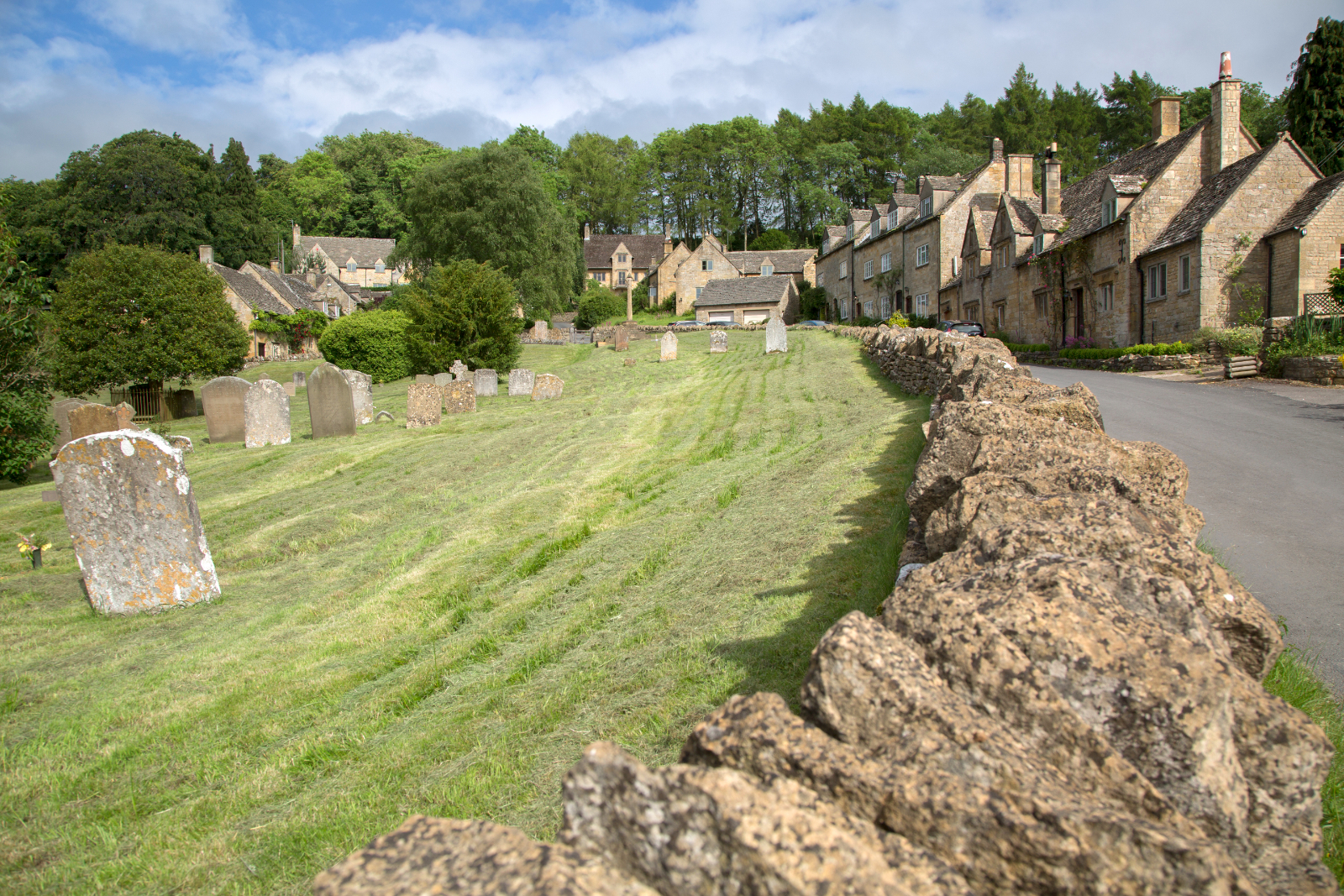
Are you looking for dog friendly holidays in the Cotswolds? If you would like to learn more on our self catering, dog-friendly cottages in Stow-On-The-Wold, please follow to links below.

